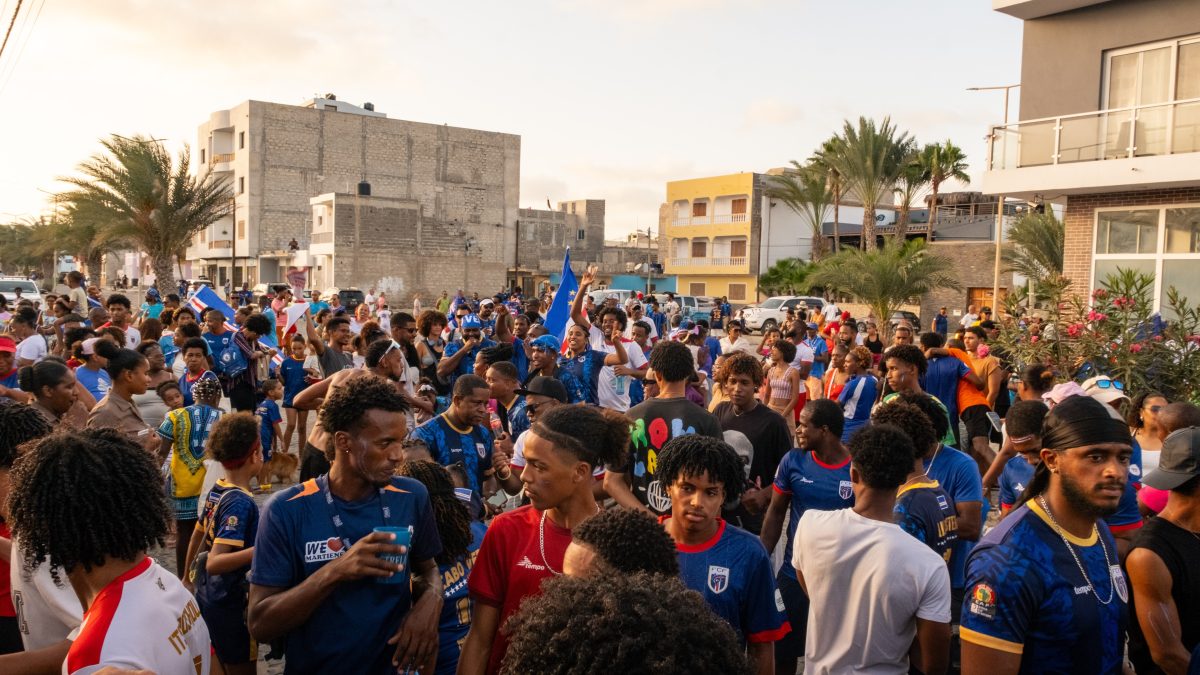
The capitals that lit up when Cape Verde, Uzbekistan and Jordan qualified for 2026 looked nothing like traditional World Cup hubs. Praia had a pitch invasion. Tashkent turned a goalless draw into a national holiday. Amman wrote messages in the sky with drones. Next summer those names sit next to Brazil, France and Argentina, and the tournament bracket finally looks closer to the sport’s actual map.
This is the first 48-team men’s World Cup. Africa goes from five places to nine, Asia from four and a half to eight, Oceania finally gets a guaranteed spot. Uzbekistan become the 81st nation to reach the finals. Cape Verde arrive with fewer residents than many European suburbs. Jordan finally turn decades of near misses into a full entry pass.
The reaction is split. One camp sees Cape Verde vs North Macedonia in a group game and thinks: yes, perfect, that’s what a World Cup should be. New flags, new songs, different kits. The other camp hears “minnows” and worries about empty upper decks in NFL stadiums. Same arguments that circled the expanded Club World Cup before a competitive group stage proved that bigger doesn’t automatically mean worse.
What almost nobody disputes: this trio aren’t accident qualifiers. Each has been climbing toward this point for years, mostly out of sight of people who only tune in when the official anthem plays.
Three debuts, three different kinds of football revolution
Cape Verde are the smallest of the three and maybe the clearest expression of what expansion unlocks. Barely half a million people live on the islands, but more Cape Verdeans live abroad than at home. The squad is built around that reality. The federation spent the last decade turning second passports and family phone calls into a scouting network that stretches from Dublin to Rotterdam to New England. Long before Roberto Lopes answered a LinkedIn DM and walked into the back line, Cape Verde were learning how to turn distance into an advantage.
On the pitch, the Blue Sharks are compact. They manage tempo, defend cleanly and break in short, sharp waves. Their World Cup ticket came from topping a qualifying group that included Cameroon. In Praia the 3–0 against Eswatini felt less like shock and more like confirmation. Back in September we wrote that Cape Verde are 90 minutes from rewriting the map of world football. A month later, they finished the job.
Uzbekistan sit in a different place on the map but a similar place in the conversation. For years they carried the tag of the team that always trips at the final hurdle—strong youth sides, lively domestic clubs, then heartbreak in the last round of qualifying. This campaign finally broke the pattern. A 0–0 away to the UAE, on a night that could easily have turned jittery, instead became the most celebrated scoreless draw in the country’s history. Within hours players were being promised new cars and clips from Tashkent celebrations bounced around the internet.
European scouts already know Abdukodir Khusanov, Eldor Shomurodov and Abbosbek Fayzullaev. Fabio Cannavaro’s arrival as coach less than a year out from the tournament adds a twist the global audience understands instantly: a World Cup-winning captain betting his reputation on a first-time qualifier.
Jordan’s path is the most recent to click into place, and the most obviously tied to a single year. Their run to the Asian Cup final in 2024 set the tone—a compact, disciplined side knocking out bigger names by defending deep, breaking fast and leaning hard on Mousa Al Tamari’s work on the right. The World Cup ticket arrived a few months later with a 3–0 win in Oman and a helping hand from South Korea. By the final whistle, the crown prince was celebrating in the stands and the streets of Amman were gridlocked with flags and fireworks. The night after, a drone show spelled out messages above the city and a World Cup trophy made of light hovered over the skyline. Jordan’s first trip arrives at a moment when federation, players and political leadership line up behind the team as a point of soft power and pride.
What happens when the ball rolls
The football question is what all of this looks like once the ball rolls next June. The new format sends the top two and eight best third-place teams into a 32-side knockout. Put simply: Cape Verde, Uzbekistan and Jordan won’t need miracles to survive the group. They’ll need a couple of good days in stadiums where the heat, travel and scheduling could bite bigger nations just as hard.
If the Club World Cup in the same country was any guide, the gap between the richest clubs and everyone else is narrower on the field than it is in the accounts. An expanded bracket can still feel competitive if enough of the so-called small sides are properly built.
There will be blowouts next summer. There always are. There may also be nights when a team from Praia, Tashkent or Amman presses a giant to the brink and the tournament feels less like a closed shop and more like an open mic. That possibility is what excites fans who’ve already started trading jokes about stocking up on Cape Verde or Uzbekistan shirts before they become impossible to find.
The deeper change is quieter. A 48-team World Cup bakes in the idea that the sport’s biggest stage isn’t just a mirror of the Champions League bracket but a place where different football cultures can force their way into the story. If 2026 works, it won’t be because every match is flawless. It’ll be because people remember when the map got redrawn and a set of so-called minnows arrived acting as if they belonged.